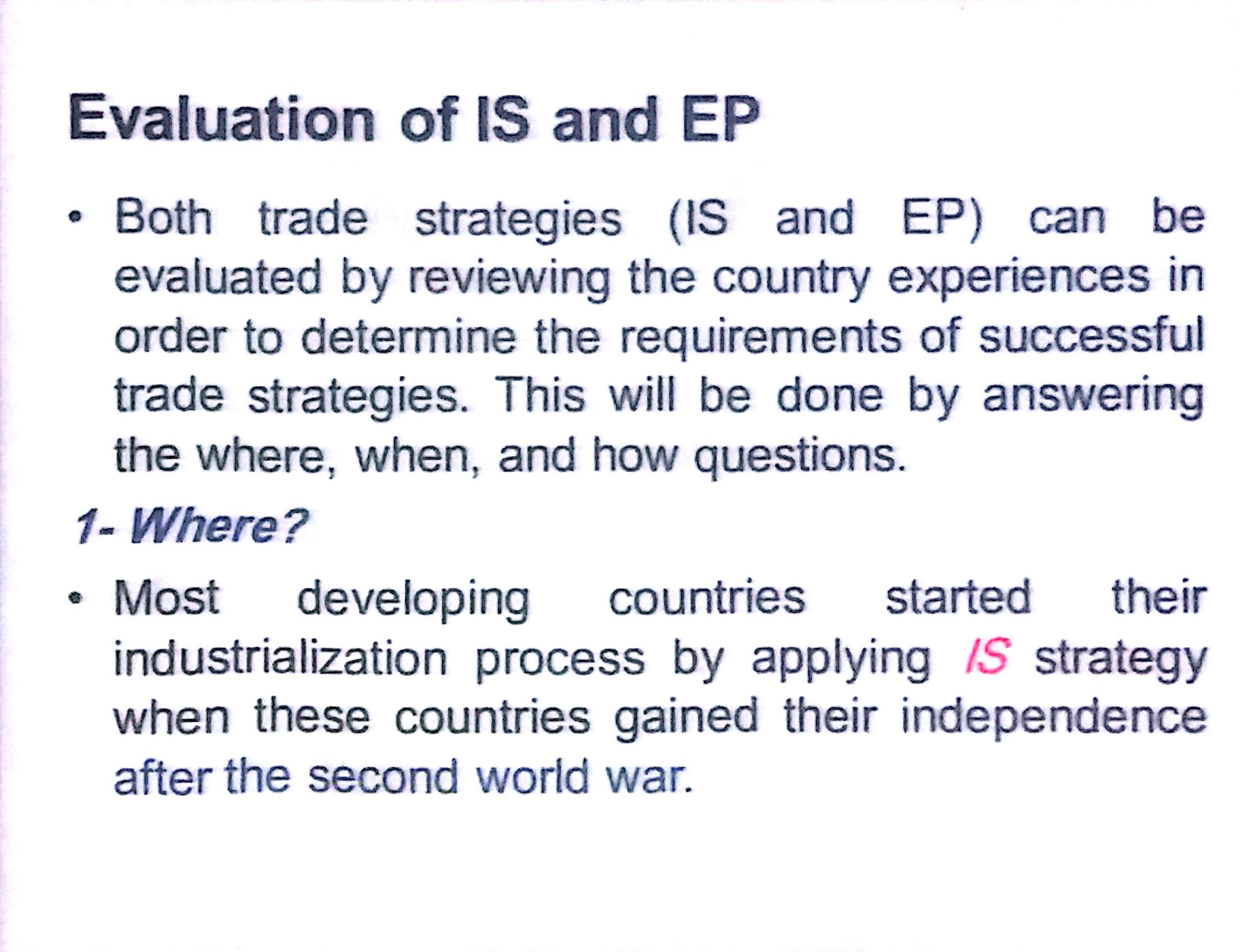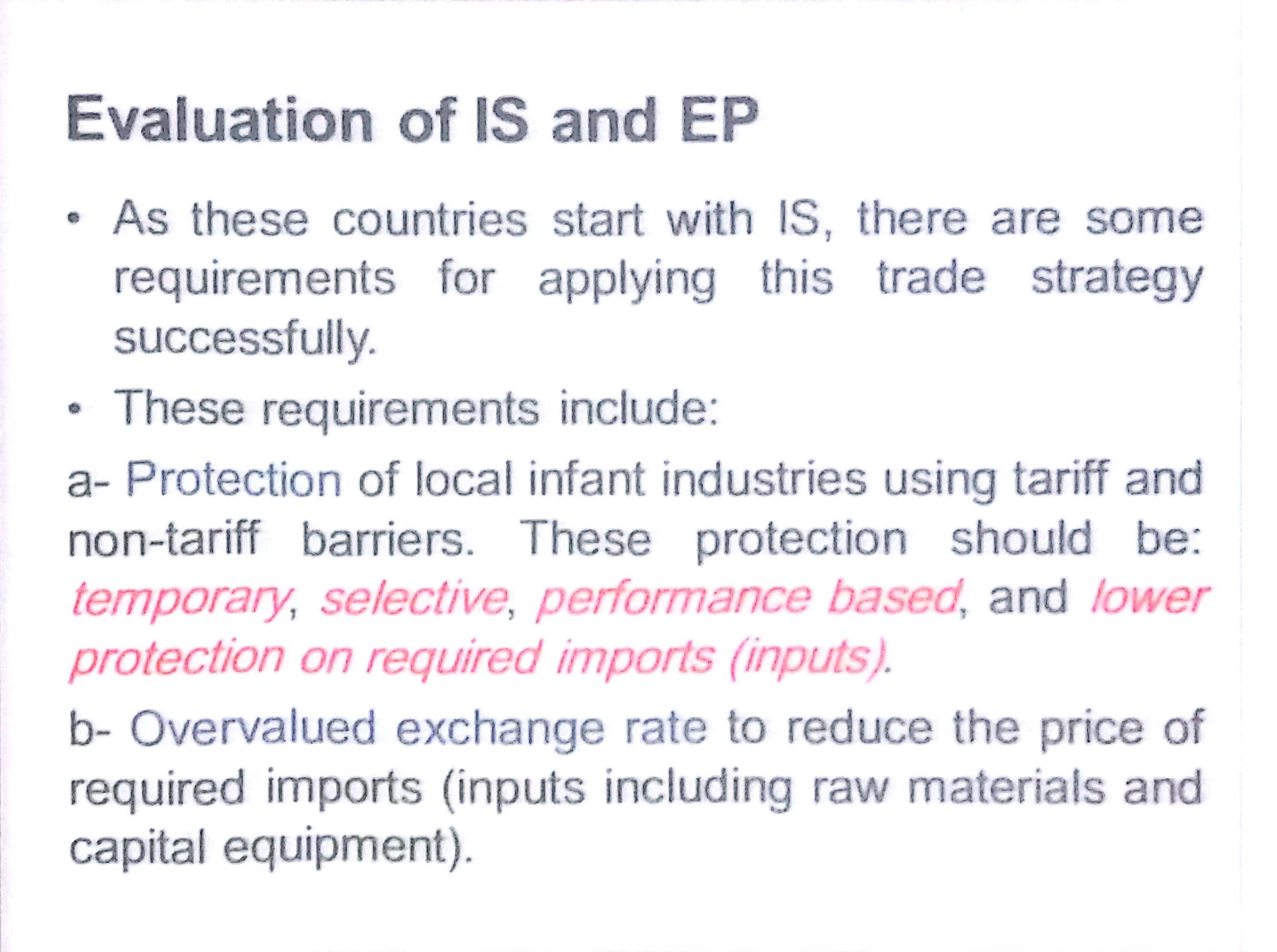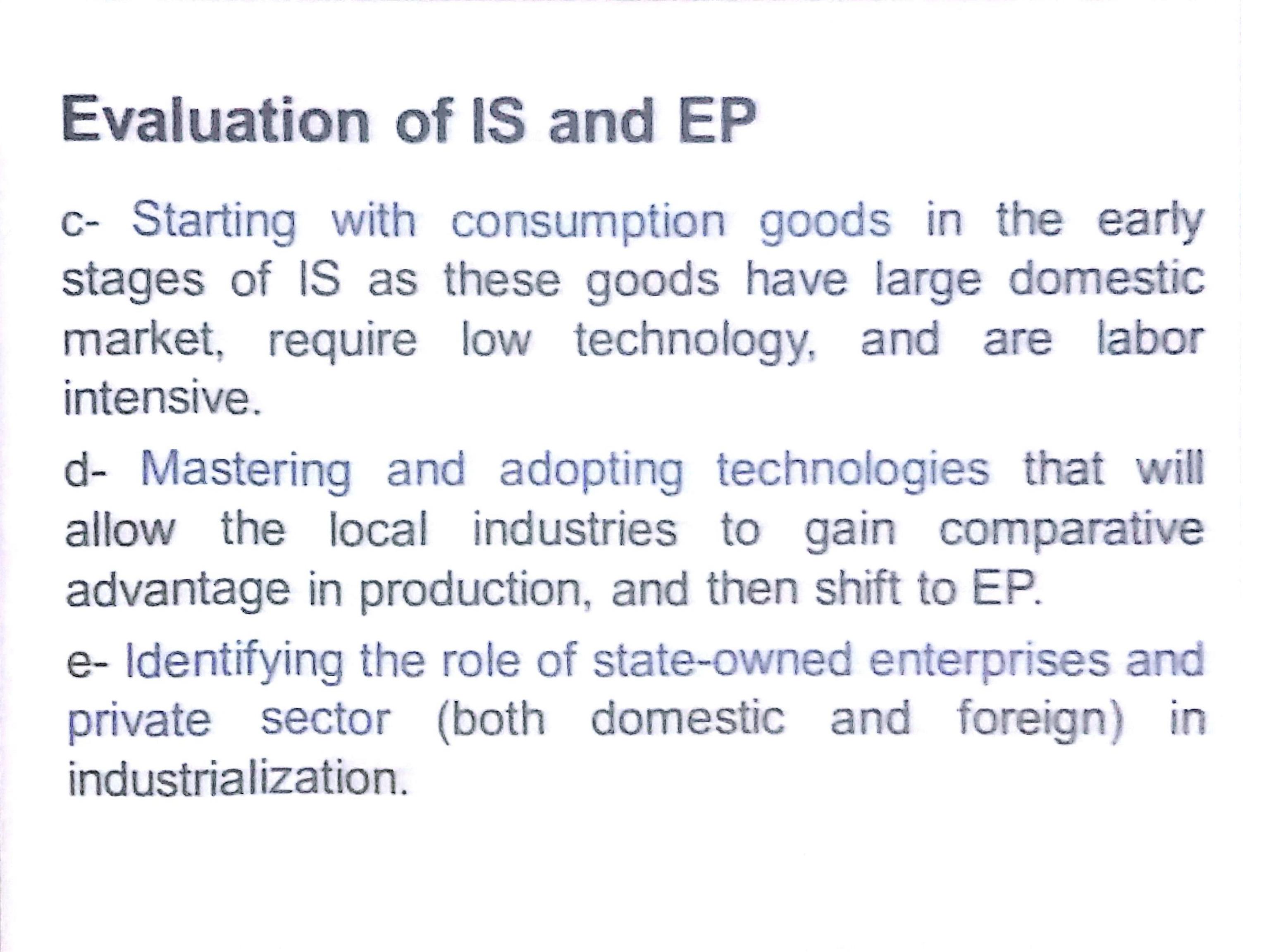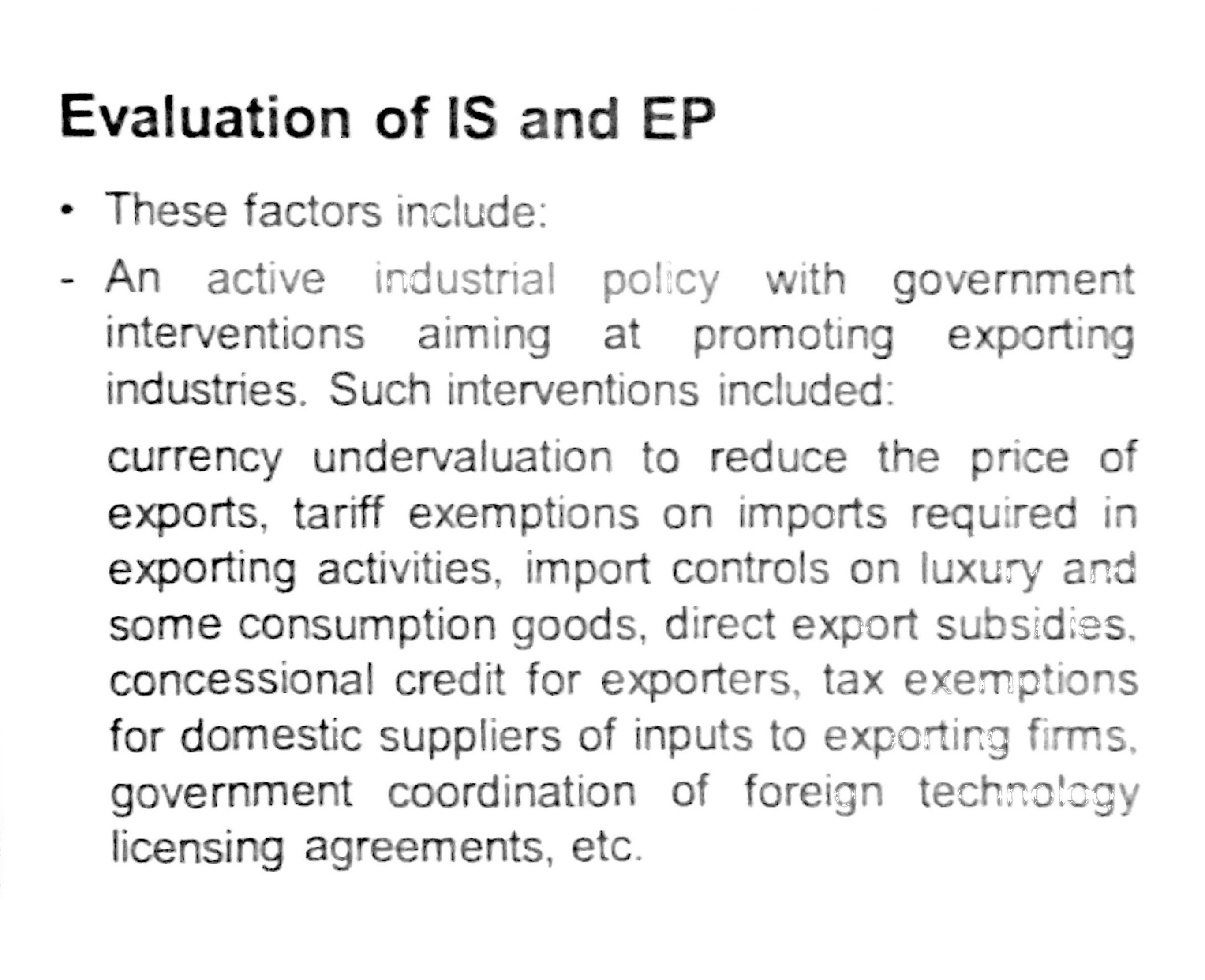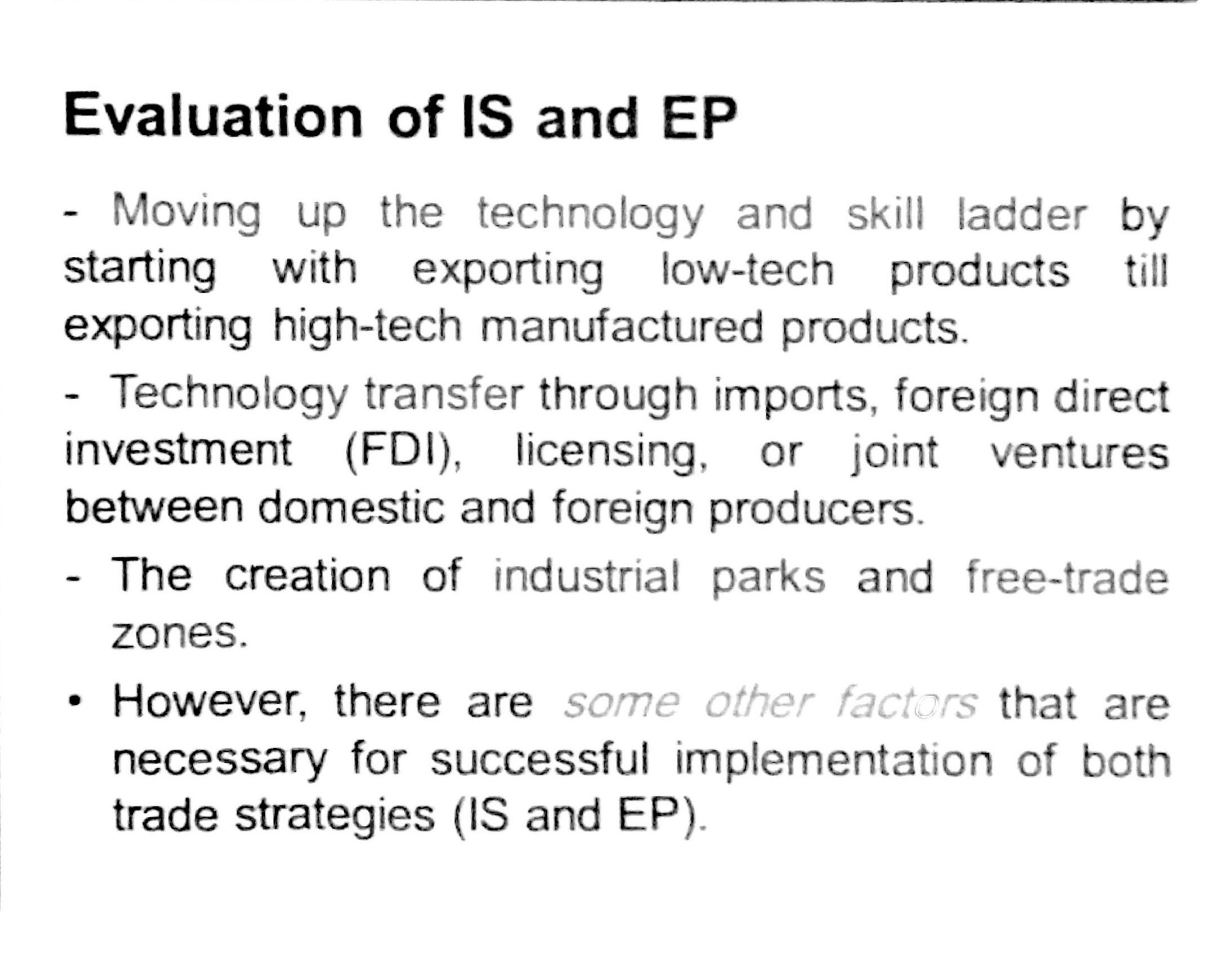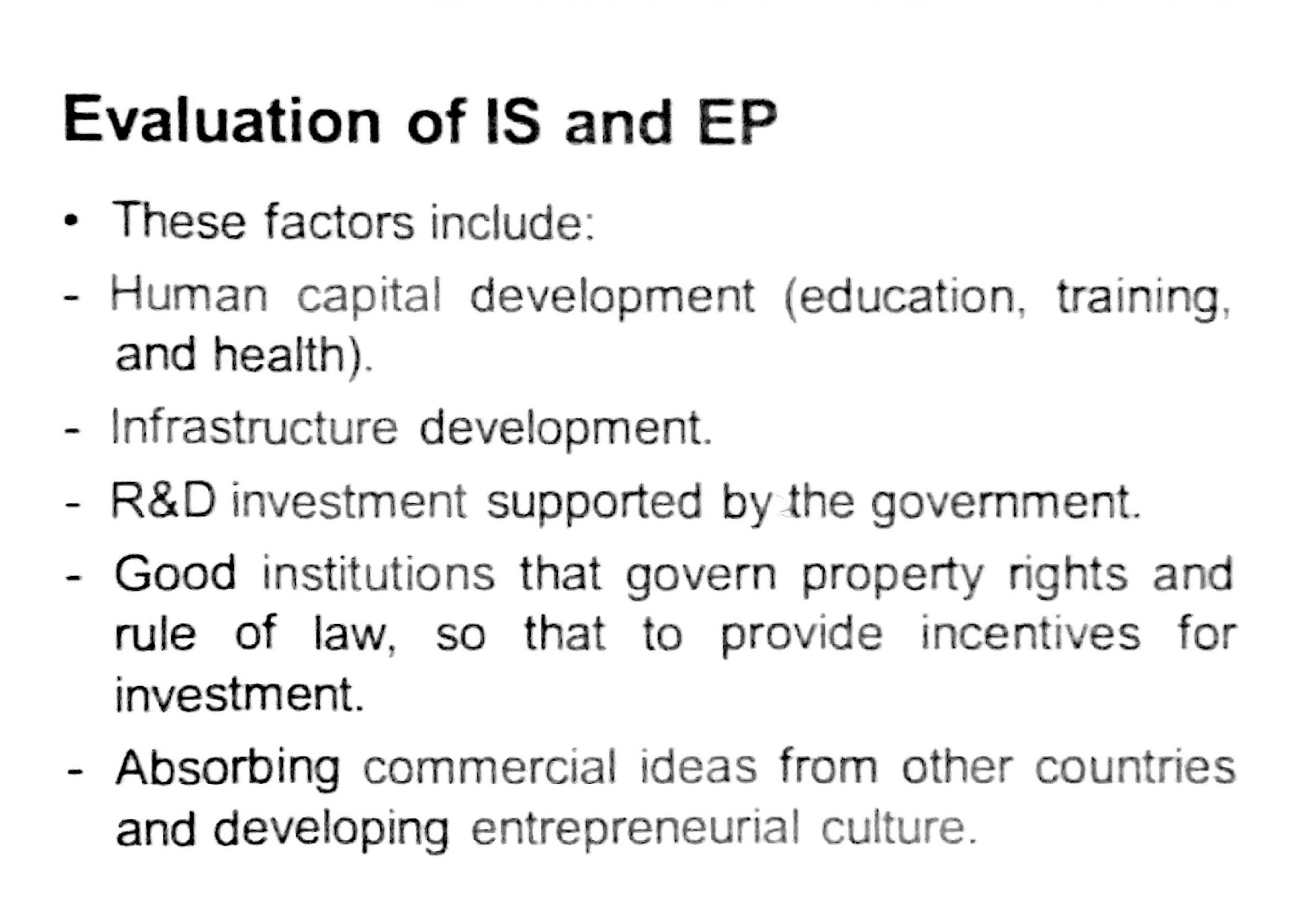
Trade Policy Debate
Import Substitution
(IS)
and
Export Promotion
(EP)

Learning Objectives
• What is a trade strategy?
• What is the difference between IS and EP?
• What are the pros and cons of IS and EP?
• How did Egypt implement IS and EP?
• How can Egypt benefit from the successful
experiences of countries like South Korea and
China?

What is a Trade Strategy?
• A trade strategy is a long term plan aiming at
achieving specific objectives related to trade and
industrialization.
• Trade strategies require certain trade policies,
including: import substitution (IS) and export
promotion (EP).
• These trade policies shape the industrialization
process of the different countries.

Difference between IS and EP
•
IS
includes policies that seek to promote rapid
industrialization by
setting high trade barriers
(tariff
and non tariff) on imports, so that to encourage
local production
to substitute these imports
, and
then gradually
move to export promotion
when
gaining comparative advantage.
•
EP
includes policies that provide
government
support to local industry sectors
that
have
comparative advantage, with the objective of
substituting narrow domestic markets with large
world markets
.

Advantages and Disadvantages
•
Advantages of IS include:
1- Protection of infant industry, strategic activities,
and employment.
2- Saving foreign currency.
3- Less dependency on other countries.
4- Government revenue (tariff revenue).
•
Disadvantages
of
IS
are
both
economic
(inefficiency, monopoly of the government, lower
growth rate and employment) and
social
(less
variety of goods and choices and lower quality of
life)

Advantages and Disadvantages
•
Advantages of EP include:
1- Greater
competition
resulting in higher quality and
lower price.
2- Producing for a
larger market
(world market)
resulting in lower costs and higher quality.
• These advantages are reflected on the macro
level in the form of increased economic efficiency
(growth, employment, and foreign currency inflow)
and social welfare (high quality, low price, and
high income).

Advantages and Disadvantages
• On the other hand, there are some limitations to
the implementation of EP in developing countries.
On the demand side:
•
Primary product exports
are limited by: relatively
low income elasticity of demand, relatively low
price elasticity of demand, artificial substitutes, low
population growth in developed countries, lower
requirements by new technologies, and trade
barriers.
•
Manufactured exports
are limited by high barriers
set by developed countries, low quality, and high
R&D investment by developed countries.

Advantages and Disadvantages
• On
the
supply
side:
domestic
supply
in
developing countries is limited by the rigidity of
supply (bottle neck problem) due to the lack of
capital, technology, skilled labor, etc.
•
But the question is:
Which is better, import substitution or export
promotion? The answer is that: it depends on
three questions:
where, when,
and
how
both
strategies are applied?
